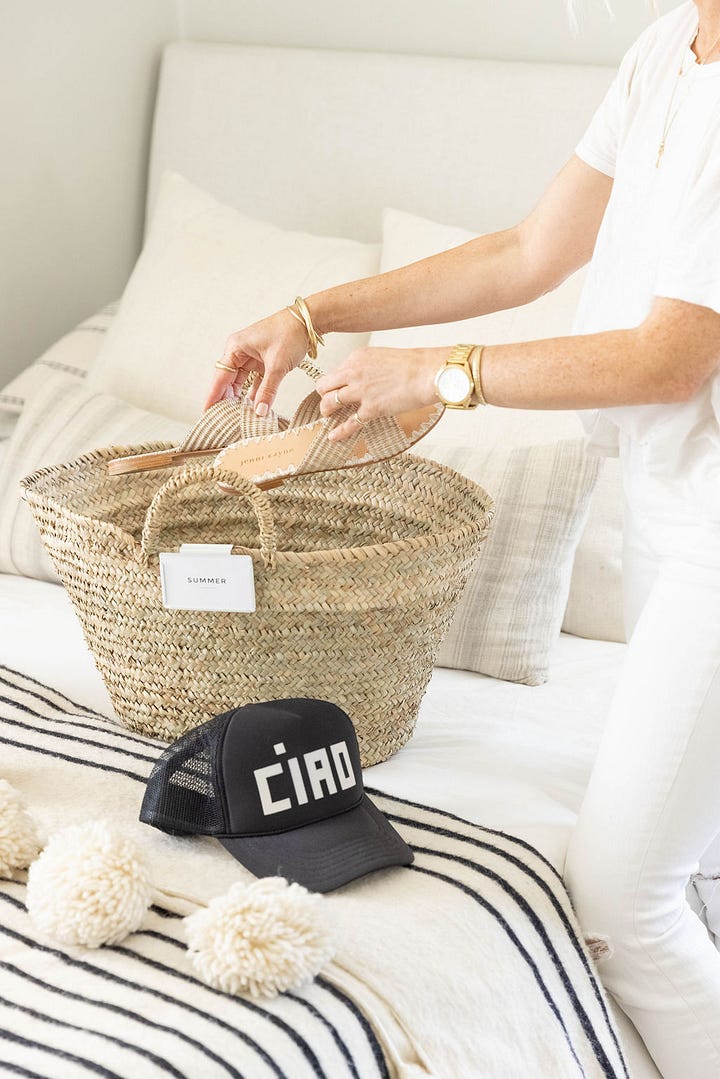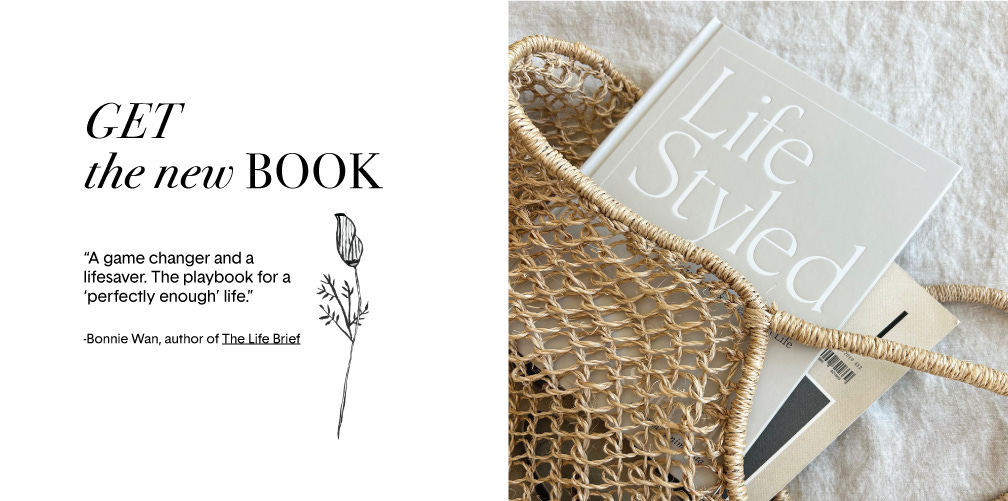The Life Edit is paywall free and available to all. Here’s why. You can support this newsletter (and make my day) by liking this post, and sharing it with anyone who you think would enjoy it. x
Minimalism is not about restriction, it’s about freedom.
Often, when I tell people I’m a minimalist (or even that my first book is called Minimalista), I am met with wild reactions - some people look frightened or skeptical, others actually take a few steps backwards. Do they think I’m going to force them to downsize or start donating their things against their will? Yes, I believe they actually do.
But, here’s the thing, I don’t want to force anyone to do anything. For me, minimalism is a wildly useful (and totally customizable) tool that I’ve leveraged to improve every single aspect of my life - and I truly believe minimalism has the potential to be helpful to anyone.
I’m breaking down some of the most commonly held questions (and misconceptions) about minimalism below. Let’s get into it…


Minimalism is Formulaic and Restrictive
Minimalism isn’t a prescriptive, one-size-fits-all formula. It’s about clarifying what’s adding value to your life, and letting go of the things that don’t. It’s about asking: what do I want to fill my home and life with on purpose? This can and should look different for all of us, hooray!
Minimalist Homes are Stark, White, and Sad
Sure… Maybe? Sometimes? I personally love a neutral color palette (it helps calm my busy brain), but you can certainly be a card-carrying minimalist and also own a leopard patterned couch and paint your walls every color of the rainbow. While the leading images in mainstream minimalism often showcase a white, stark aesthetic, the intention of a minimalist lifestyle is to help you embrace what you love and value most. You get to do you.
Minimalists Only Own Three Shirts
I am not a fan of rigid rules (or closet math). I have no idea how many clothes I own. I don’t count socks, or sweaters, or anything else, I just know that everything fits neatly into my dresser drawers and small closet, with a little space in between each hanger. While some people may find it useful to aim for a certain quantity of clothes or personal possessions, there is no need to do so unless it feels helpful. There is no official agreement by a governing body on how many items a person should have - it’s about thoughtfully determining the perfect amount for you - whatever that looks like.
Minimalists Never Buy New Stuff
Minimalism is not a form of punishment, and it does not have to be austere or ascetic. I buy new things, but typically with a budget and a plan. I take my daughters shopping when they need new clothes, shoes, books, or school supplies, and buy them special gifts on holidays and birthdays. I treat myself to clothes, housewares, and accessories. But, I always do my best to shop sustainably - buying gently used items and avoiding plastic and fast fashion whenever possible. Minimalism has helped me shift from splurging mindlessly on things I don’t really care about, to investing in fewer, better things that I love, value, and take care of. Better for my wallet - and the planet.
Minimalism Is Only For Certain Types of People
I used to think minimalism was only for single white men who lived in the woods and contained all of their worldly possessions in a single backpack. I didn’t see examples that felt resonant to me in the movement, so I didn’t think it was for me.
As a busy working mom who craves order and simplicity, but also really loves pretty things, I have cultivated and customized a flexible minimalist philosophy that works for my real life. I’ve come to understand that minimalism can be employed by anyone regardless of race, gender identity, or income level. Over time, I’ve also discovered inspiring new voices in the minimalist movement that represent a more diverse perspective (check out my interview with Christine Platt, The Afrominimalist right here).
Minimalism is About Owning as Little as Possible
Minimalism is widely understood as being focused on subtraction and reduction, but the goal is really about intentionality. Throughout my minimalist evolution I’ve subtracted a fair amount of extraneous stuff from my home and life, sure, but I’ve also added new things into the mix. Better things. Higher quality things. More meaningful things. Practicing a minimalist lifestyle means turning up the volume on the things that add value, meaning, and substance, and turning down the clutter, distraction, and noise that stand in the way.
_
Does your home or life feel over-stuffed? You are not alone. Most of the people I’ve ever talked to in my life (not just clients, but literally everyone) express a longing for less clutter and more freedom, ease, spaciousness, and joy. Media and advertising will tell you that the answer is always to add - an app, a product, a purchase - that one thing you need that will solve everything and make you finally feel better. Addition may temporarily soothe the symptom, but it rarely addresses the problem.
Less clutter, distraction, and consumption, can be a direct route to more contentment, connection, community, and contribution. If you are craving more, give less a try.




I am only about a year late to this post / party but so glad I found it. YES to intentionality. The beauty of simplicity. A home with meaning. Such rich reminders, Shira!
I love your perspective that minimalism is about intentionality. That it’s not about a lack of things so much as a lack of things that don’t serve you. As time goes on, I find myself paring down to make space for peace and calm, but still being realistic about the way I live my life. Really love this essay.